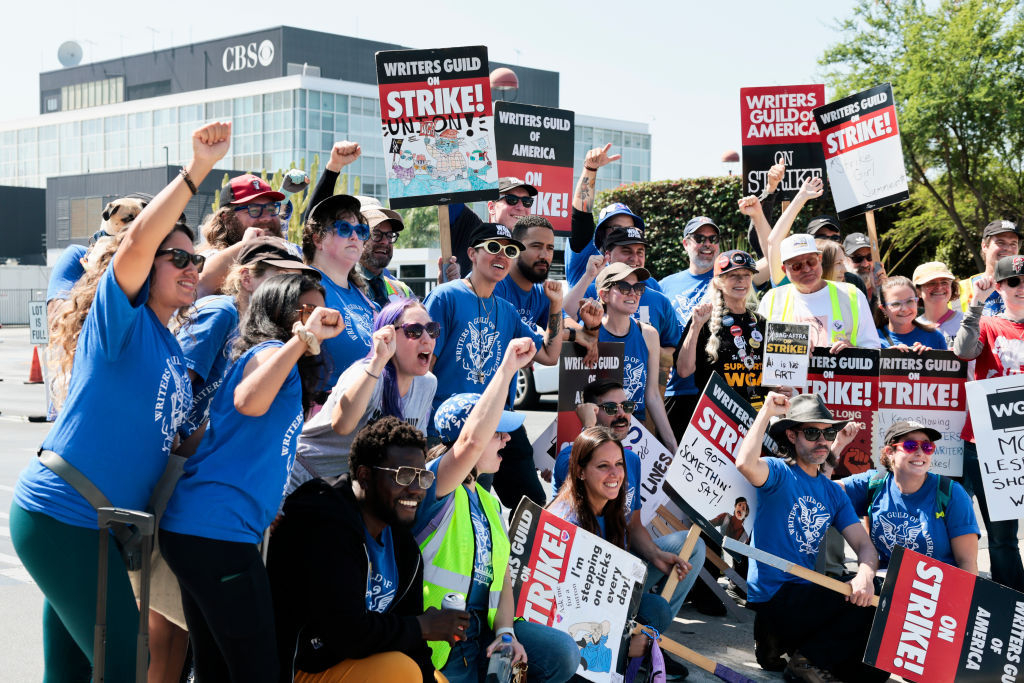
After five grueling days of negotiation, the screenwriters in the Writers Guild of America (WGA) have reached a tentative agreement with the studios and streamers, the Alliance of Motion Picture and Television Producers (AMPTP), to end a strike that began in May. The key word here is tentative: Picketing has paused, but writers are still technically on strike until the deal is ratified.
[time-brightcove not-tgx=”true”]
While we won’t see the fine print of the contract until the final language is agreed upon by both sides, the WGA did craft a residual formula for streamers—like Netflix, Max, Hulu, and Prime Video—in which TV shows and movies that reach certain performance benchmarks are essentially given bonuses. And a formula was created in which the number of episodes in a season will determine, on a sliding scale, how many writers must be hired to work on a show. Using AI to generate content—a major concern for both writers and actors—seemed to be a sticking point, and were among the last details debated before bargaining ended.
“We can say, with great pride, that this deal is exceptional—with meaningful gains and protections for writers in every sector of the membership,” the WGA wrote in an email to its members. “What we have won in this contract—most particularly, everything we have gained since May 2nd—is due to the willingness of this membership to exercise its power, to demonstrate its solidarity, to walk side-by-side, to endure the pain and uncertainty of the past 146 days.”
What does a tentative agreement mean for screenwriters?
Although picketing has been suspended, the strike itself is still in effect, meaning that screenwriters will not yet be returning to work. Once the nitty-gritty language in the contract is finalized, the WGA negotiating committee—the people who were actually at the table with the AMPTP—will vote. That will determine whether the contract will go to a vote by the leaders of the WGA.
If both of those votes go through, then the roughly 11,000 members of the WGA will also decide whether or not to accept the terms. If everyone agrees to the new contract, it will last for three years, until it’s once again up for reapproval.
“To be clear, no one is to return to work until specifically authorized to by the Guild,” the WGA wrote in its statement. “We are still on strike until then. But we are, as of today, suspending WGA picketing. Instead, if you are able, we encourage you to join the SAG-AFTRA picket lines this week.”
What does this mean for the SAG strike?
Of course, even if the writers return, there won’t be anyone to perform their work until the actors’ strike, by those in the Screen Actors Guild—American Federation of Television and Radio Artists (SAG-AFTRA), also ends. Nor will actors be able to promote their work, a concern that has prompted studios and streamers to push back some releases.
“SAG-AFTRA congratulates the WGA on reaching a tentative agreement with the AMPTP after 146 days of incredible strength, resiliency, and solidarity on the picket lines,” SAG-AFTRA said in a statement. “Since the day the WGA strike began, SAG-AFTRA members have stood alongside the writers on the picket lines. We remain on strike in our TV/Theatrical contract and continue to urge the studio and streamer CEOs and the AMPTP to return to the table and make the fair deal that our members deserve and demand.”
The streaming residual formula that the WGA accomplished should help lay the groundwork for a similar revenue-based residual system for SAG-AFTRA, something the latter has been striking for. For now, it seems likely that the coming end of the WGA strike may convince studios and streamers to move more quickly with SAG-AFTRA as well.
The post Screenwriters Have Reached a Tentative Deal to End the Strike. Here’s What Happens Next With the WGA and SAG first appeared on The News And Times – thenewsandtimes.com.
